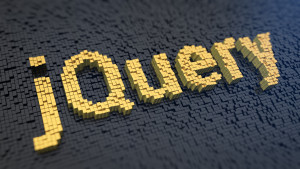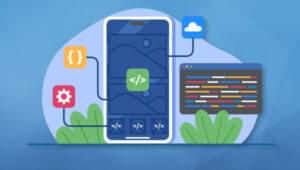10 Advanced but Simple jQuery Plugins
Today’s post introduces 10 advanced and yet simple jQuery plugins that will enhance your web experience drastically and will give developers the chance to enrich websites with amazing elements without the need to write heaps of code. Enjoy!
Related Posts:
1. Quovolver
Is a simple extension for jQuery that takes a group of quotes and displays them on your page in an elegant way.
2. jQuery Lifestream
Show a stream of your online activity with jQuery.
3. jQuery.folderPreview
Is a jQuery plugin that takes a series of images and positions them so that they appear within a folder graphic. This enhances the attractiveness of a browsing UI system, allowing the user to visualize the contents of the folder.
4. AJAX PayPal Cart
Is an easy to use JQuery plugin for web developer to add a full function shopping cart in their website. The AJAX cart can include cart widgets which allow display of cart information easily. Support PayPal Website Payment Standard.
5. jQuery Credit Card Validation
Smart Validate is a jQuery credit card validation plugin, that makes credit card format validation a simple task. It ensures that user has entered valid credit card number before making actual transaction.
6. Smart spin
Is a jQuery spin button plugin that mimics the very common windows spin button control. Smart spin allows you to select a value between minimum and maximum values using either mouse or keyboard.
7. diagonalFade
Is a jQuery plugin allowing you to easily specify direction, fade-in, fade-out, and a host of other options to a grouping of elements.
8. jQuery TagBox
This is a jQuery plugin to help add tags like input in your forms.
9. My QR Code
This plugin generate QR code for mobile devices using Google Chart API with jQuery. By default, the plugin will generate the QR code for the URL of the page.
10. jEscape
This extension captures all the key down events faster and less time writing code, you’ll profit.
FAQs on Implementing 10 Advanced Yet Simple jQuery Plugins for Web Development
What are jQuery plugins and why are they important?
jQuery plugins are pieces of code that are developed to extend the functionality of jQuery, a fast, small, and feature-rich JavaScript library. They are important because they allow developers to create complex applications with less code and effort. They provide reusable functionalities that can be easily integrated into any web project. This not only saves time but also ensures consistency and reliability in the code.
How can I create a jQuery plugin?
Creating a jQuery plugin involves defining a function and adding it to jQuery’s prototype object. This function then becomes a method that can be invoked on jQuery objects. Here is a simple example of a jQuery plugin:$.fn.myPlugin = function() {
// plugin code here};
You can then use this plugin on any jQuery object like this:$('selector').myPlugin();
What are some examples of advanced jQuery plugins?
There are many advanced jQuery plugins available that provide a wide range of functionalities. Some examples include DataTables for creating dynamic tables, FullCalendar for creating interactive calendars, and FancyBox for creating lightbox overlays.
How can I use a jQuery plugin in my project?
To use a jQuery plugin in your project, you first need to include the jQuery library and the plugin file in your HTML document. Then, you can use the plugin’s methods on your jQuery objects. Each plugin has its own set of options and methods, so you should refer to the plugin’s documentation for specific usage instructions.
What are some best practices for using jQuery plugins?
Some best practices for using jQuery plugins include checking the plugin’s compatibility with your jQuery version, reading the plugin’s documentation thoroughly, and testing the plugin in different browsers to ensure it works as expected. It’s also a good idea to check the plugin’s update history and community support to ensure it’s actively maintained.
Can I modify a jQuery plugin?
Yes, you can modify a jQuery plugin to suit your specific needs. However, it’s important to note that any modifications you make may not be supported by the plugin’s original developer, and may cause issues with future updates. Therefore, it’s recommended to thoroughly test any modifications you make.
How can I troubleshoot issues with a jQuery plugin?
If you’re experiencing issues with a jQuery plugin, the first step is to check the console for any error messages. These messages can often provide clues about what’s going wrong. If you’re still unable to resolve the issue, you can try reaching out to the plugin’s developer or community for help.
Can I create my own jQuery plugin?
Yes, you can create your own jQuery plugin. This can be a great way to encapsulate and reuse code across multiple projects. When creating your own plugin, it’s important to follow jQuery’s plugin authoring guidelines to ensure your plugin is compatible with other jQuery code.
What is the difference between a jQuery plugin and a jQuery UI widget?
A jQuery plugin is a piece of code that extends jQuery’s functionality, while a jQuery UI widget is a pre-built component that provides a specific functionality, such as a date picker or a slider. Widgets are built using the jQuery UI Widget Factory, which provides a robust and consistent framework for creating reusable components.
How can I keep my jQuery plugins up to date?
Keeping your jQuery plugins up to date is important for ensuring they continue to work correctly and securely. You can check for updates by visiting the plugin’s website or GitHub repository. Some plugins also provide update notifications directly within the code. When updating a plugin, it’s important to thoroughly test it to ensure it still works as expected with your code.
Sam Deering has 15+ years of programming and website development experience. He was a website consultant at Console, ABC News, Flight Centre, Sapient Nitro, and the QLD Government and runs a tech blog with over 1 million views per month. Currently, Sam is the Founder of Crypto News, Australia.
Published in
·App Development·JavaScript·Mobile·Mobile Web Development·Tools & Libraries·October 27, 2014














